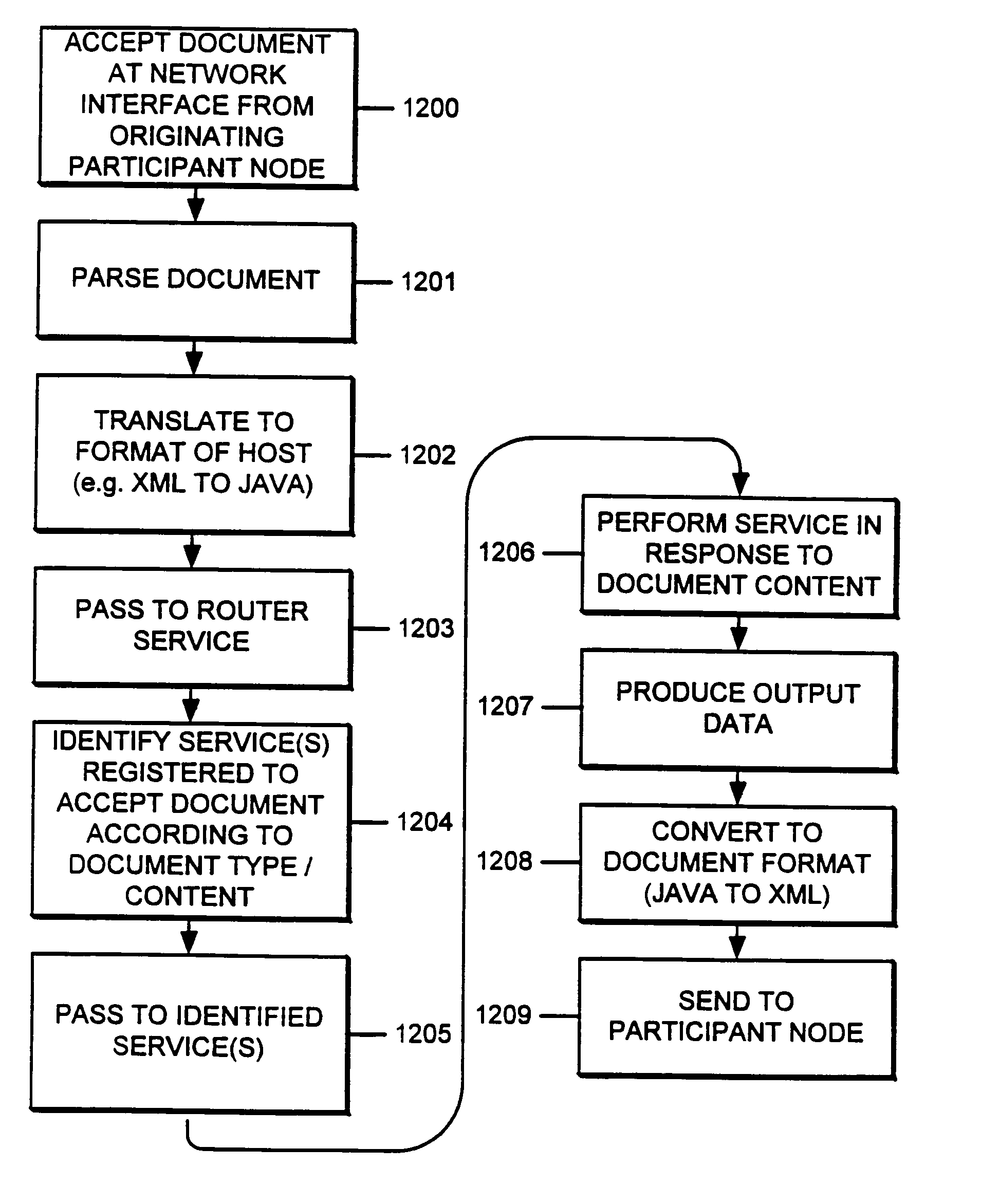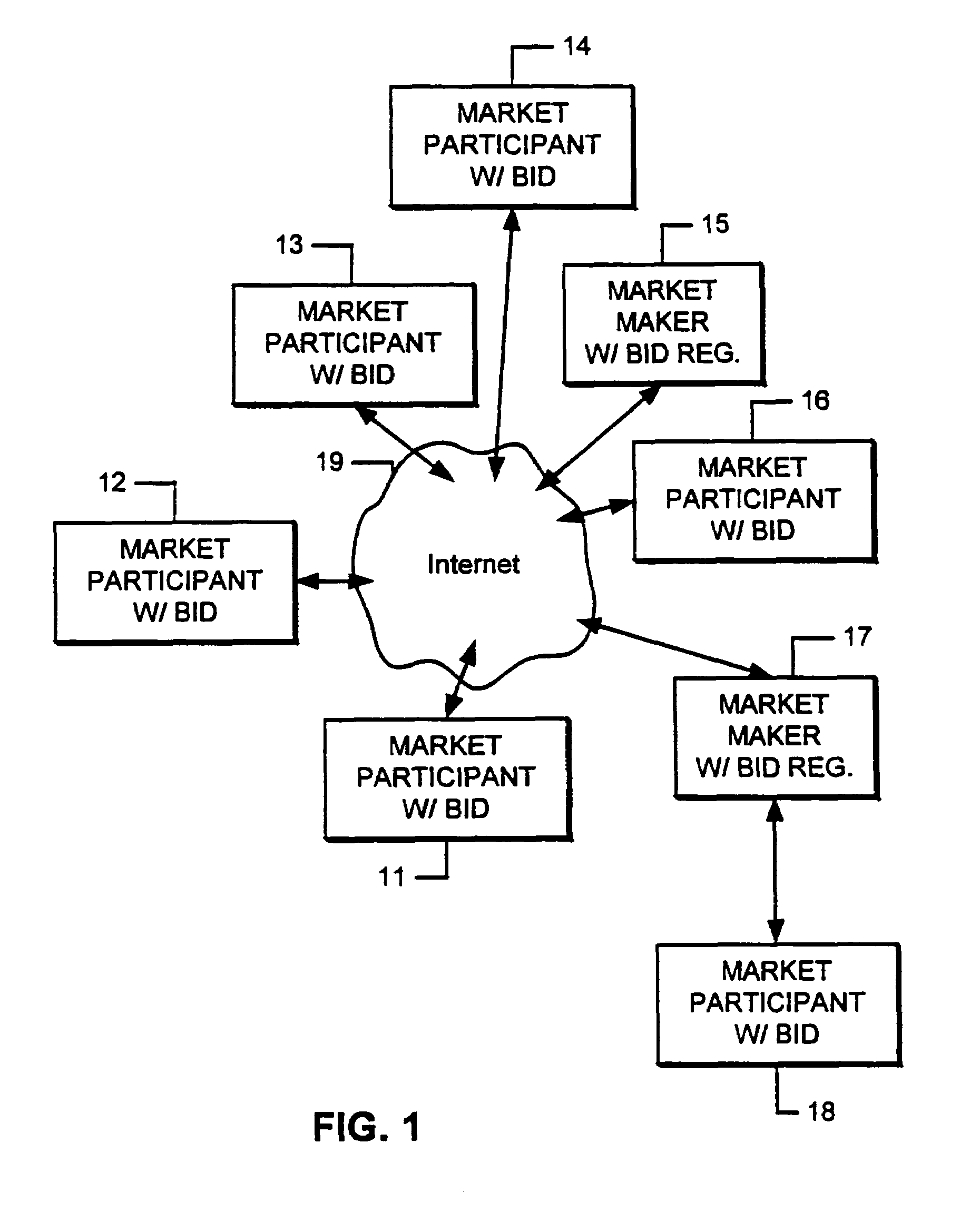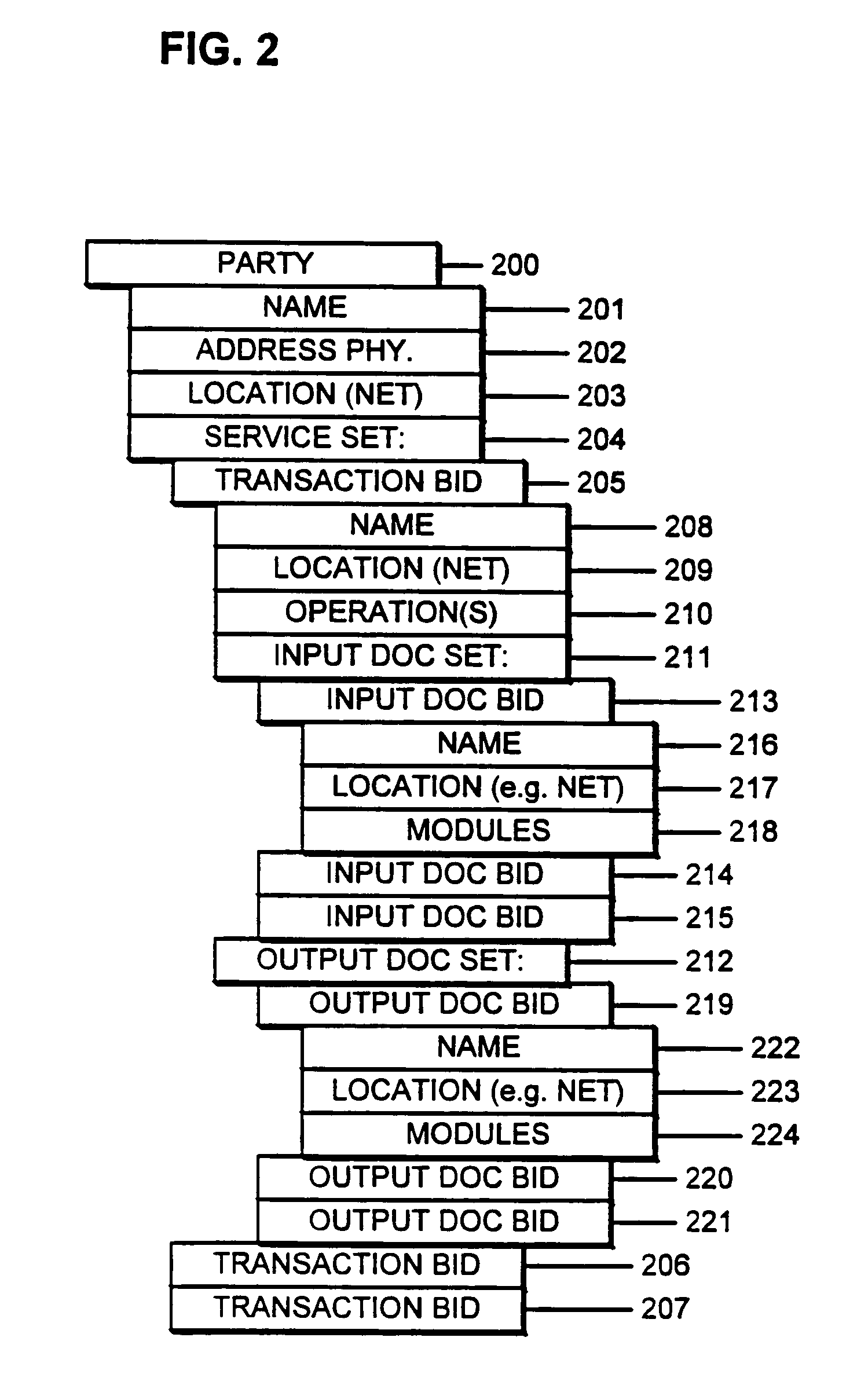[0017]The present invention offers an infrastructure for connecting businesses with customers, suppliers and trading partners. Under the infrastructure of the present invention, companies exchange information and services using self-defining,
machine-readable documents, such as
XML (
Extensible Markup Language) based documents, that can be easily understood amongst the partners. Documents which describe the documents to be exchanged, called business interface definitions BIDs herein, are posted on
the Internet, or otherwise communicated to members of the network. The business interface definitions tell potential trading partners the services the company offers and the documents to use when communicating with such services. Thus, a typical business
interface definition allows a customer to place an order by submitting a
purchase order, compliant with a document definition published in the BID of a party to receive the
purchase order. A supplier is allowed to check availability by downloading an inventory
status report compliant with a document definition published in the BID of a business
system managing
inventory data. Use of predefined,
machine-readable
business documents provides a more intuitive and flexible way to access enterprise applications.
[0023]The process of establishing the stored specification of an interface according to another aspect of the invention includes accessing elements of the machine-readable specification from a repository. The repository stores a
library of logic structures, content models, and
schematic maps for logic structures, and definition of documents that comprise logic structures used to build interface description. A repository accessible in the network facilitates the building of interface descriptions which can be easily shared. Any differences between the input document created for a particular process and the output document expected as a return by a complementary process can be easily negotiated by communication on the network and agreeing on
common logic structures to express particular information.
[0026]According to another aspect of the invention, the storage units defined in the definitions of the input and output document comprise parsed data including character
data encoding text characters, and mark-up data identifying sets of storage units according to the logical structures of the input and output documents. According to another aspect of the invention, at least one of the sets of storage units encodes the plurality of text characters providing a
natural language word. This facilitates the use of the definitions of input and output documents by human readers and developers of such documents.
[0039]Accordingly, the present invention provides a foundation for electronic commerce based on the sharing of specifications of input and output documents. Documents provide an intuitive and flexible way to access business services, much simpler to implement than
programming APIs. It is much easier to interconnect companies in terms of documents that are exchanged, on which such companies already largely agree, than in terms of business system interfaces which invariably differ. In addition, such documents are specified in a human readable format in the preferred embodiment. According to the present invention the business interfaces are specified in documents, such as
XML documents that are readily interpretable by humans as well as by computers.
[0040]Utilization of the document based transaction architecture of the present invention involves the use of a parser which operates in basically the same way for any source of documents, eliminating much of the need for custom programs to extract and integrate information from each participant in the network. Thus, integrating enterprise information from accounting,
purchasing, manufacturing, shipping and other functions can be accomplished by first converting each source to a document having an architecture according to the present invention, and then
processing the parsed
data stream. Each node in the system that participates in the market only needs to know about the format of its internal systems, as well as the format of the documents being specified for interchange according to the transaction. Thus, there is no need to be able to produce the native format of every other node which might want to participate in the electronic commerce network.
[0041]For complete
business integration, the present invention provides a repository of standardized logical structures, like XML elements, attributes or meta data, establishing a semantic language for particular commerce communities, a means for mapping between different meta data descriptions, and a
server for
processing the documents and invoking appropriate applications and services. The basic building blocks of a network according to the present invention include the business interface definitions which tell potential trading partners what online services a company offers and which documents to use to invoke the services; and servers which provide the bridge to bind together the set of internal and external business services to create a trading
community. The
server operates to parse the incoming documents and invoke the appropriate services. Also the
server according to the present invention handles the translation tasks from the format of the documents being received and transmitted, to and from the formats of the respective host systems. Thus, trading partners need only agree on the structure, content and sequencing of the
business documents exchanged, and not on the details of
application programmer interfaces. How a document is processed and the actions which result from
receipt of a document are strictly up to the businesses providing the services. This elevates integration from the
system level to the business level. It enables the business to present a clean and stable interface to its partners despite changes in its internal
technology implementation, organization or processes.
 Login to View More
Login to View More  Login to View More
Login to View More 


